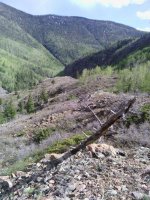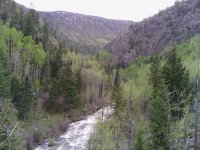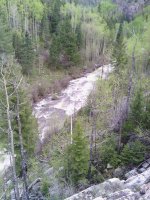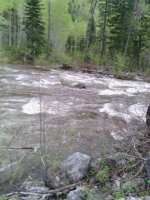UncleMatt
Bronze Member
- Jul 14, 2012
- 2,389
- 2,531
- Detector(s) used
- Garrett Infinium & Gold Bug II, Bazooka Super Prospector Sluice
- Primary Interest:
- All Treasure Hunting
- Thread starter
- #141
The thing is I have all claims back to the mid 80's in my database, and none of them were in this area. So I am stumped. And yes, the long thin stakes I showed in the photos looked like they had been left up there just a few weeks earlier, if not days. Yet I found no signs of recent activity like foot prints, fire areas, or campsites. I did see an intact blue tarp covering something about 75 feet to the left of that cave I show in the last photo, but I respect people's stuff and didn't even go look to see what was up over there.












